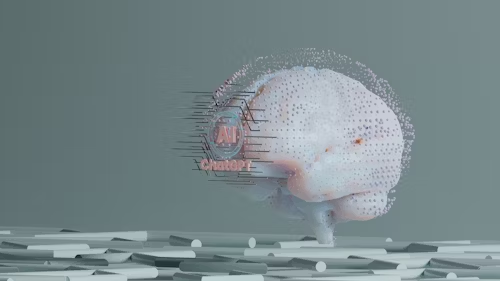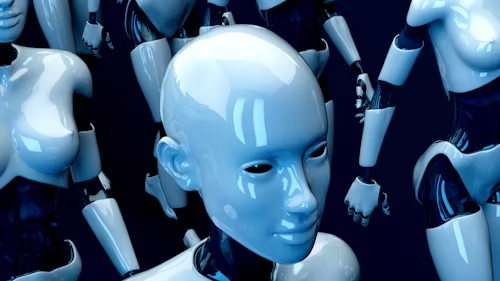You’ve probably heard terms like “Edge AI” and “Internet of Things (IoT)” tossed around in tech articles or business meetings. But let’s be honest, most of those explanations feel like alphabet soup.
So today, let’s have a real conversation. I will walk you through what these terms actually mean, how they work together, and most importantly how they’re already shaping your everyday life (even if you don’t notice it).
What on Earth Is Edge AI?
Think of Edge AI as the “brain” that lives close to where data is created. Normally, AI needs to send information to huge cloud servers to think and respond.
But Edge AI does the thinking right there on your phone, camera, smartwatch, or even your car.
For example, When your smartphone unlocks with Face ID, that little AI doesn’t fly your selfie off to the cloud for analysis. It happens right there on your phone; fast, private, and secure.
That’s Edge AI in action. It is AI with street smarts; analyzing data right where it happens.
What is the Internet of Things (IoT)?
Now, IoT (Internet of Things) is all about connection. It’s every gadget, appliance, and machine that can collect data and talk to another device or the internet.
Your smart fridge that tells you when the milk’s low? That’s IoT.
Your fitness watch that tracks your heartbeat and sleep? Also IoT.
The traffic cameras that adjust stoplights automatically? You guessed it? IoT again.
Individually, each device does something small. But together, they form an ecosystem that keeps learning, improving, and responding; almost like a living digital network.
How Edge AI Brings Real-Time Intelligence to IoT Devices

Here’s where the real magic of smart technology happens. IoT devices are incredible at collecting data; your smartwatch tracks your heart rate, your home sensors monitor temperature, and industrial machines record performance around the clock.
But collecting data isn’t the same as understanding it. That’s where Edge AI in IoT comes into play. Edge AI gives these devices the ability to think and make decisions locally, without always depending on distant cloud servers.
Processing data right where it’s created, Edge AI enables real-time data processing, faster responses, stronger privacy, and lower operating costs. Think of it this way: IoT connects everything, while Edge AI makes those connections intelligent.
Together, they create smart systems that react instantly like self-driving cars braking in the moment or smart cameras recognizing movement the second it happens. The result is a world where devices don’t just collect data; they understand it, learn from it, and act on it.
10 Examples of Edge AI in IoT
1. Smart Manufacturing
In factories, IoT sensors track everything; temperature, vibration, pressure. Edge AI takes that data and predicts when a machine might fail before it does.
Imagine a motor that starts to shake oddly. Instead of waiting for a breakdown, Edge AI says, “Hey, this pattern looks off, schedule maintenance now.” Result? Less downtime. Less cost. More productivity.
2. Smart Cities
Ever notice how some cities have traffic lights that seem to “know” when cars are coming?
That’s Edge AI and IoT teaming up. Cameras and sensors monitor intersections. The AI processes data right there, no cloud delay, and adjusts signals to ease congestion or even prioritize emergency vehicles.
3. Healthcare
Wearable health devices aren’t just fitness toys anymore. Edge AI allows them to monitor heart rate, oxygen levels, or glucose in real time.
If something unusual happens, the device can alert you or your doctor immediately, even if you’re offline or far from a hospital. That’s a game-changer for rural healthcare and elderly patients.
4. Retail
Have you ever walked into a store and noticed shelves that restock faster or digital displays that react to how busy the store is?
That’s Edge AI working behind the scenes; counting items, analyzing foot traffic, and alerting staff when shelves are empty. It helps retailers cut waste and keep you happy.
5. Autonomous Vehicles
Self-driving cars can’t afford to “think slowly.” Every decision from detecting a pedestrian to recognizing a red light must happen in milliseconds.
Edge AI enables this by analyzing sensor and camera data directly in the vehicle. It’s what makes self-driving possible, safe, and fast.
6. Smart Homes
Your smart home assistant, thermostat, or lighting system learns your patterns, when you wake up, how you like your lights, what temperature feels just right. That’s Edge AI quietly personalizing your home experience, optimizing energy use, and saving you money.
7. Smart Farming
Farmers are now using drones, soil sensors, and weather stations powered by Edge AI. These systems analyze soil moisture, crop health, and rainfall patterns on-site, giving farmers instant insights, even without stable internet.
8. Security Cameras
Instead of sending hours of footage to a server, Edge AI cameras can identify suspicious activity instantly, like movement at night or someone entering a restricted area. It’s faster, more private, and saves massive storage costs.
9. Energy Management
IoT sensors track electricity flow across grids and buildings. Edge AI processes that data to balance supply and demand, detect outages, or flag energy waste. It’s how modern energy companies prevent blackouts and make systems more sustainable.
10. Logistics
Shipping companies use IoT trackers to monitor goods. Edge AI then analyzes that data to reroute trucks, detect temperature changes for perishable items, and ensure everything arrives safely; on time. It’s why your next-day delivery often really is next day.
Why Edge AI + IoT Is Such a Big Deal
| Benefit | What It Means | Why It Matters |
|---|---|---|
| Speed | Local data processing enables real-time decision-making. | Devices and systems react instantly. Eseential for cars, healthcare, and industrial automation. |
| Privacy | Less data is sent to the cloud, keeping sensitive information secure and local. | Builds user trust and reduces the risk of data breaches or leaks. |
| Cost Savings | Cuts bandwidth, cloud storage, and data transmission costs. | Makes operations more affordable and scalable for businesses. |
| Reliability | Devices can keep working even without internet access. | Ensures consistent performance in remote or unstable network environments. |
| Efficiency | Local processing uses less energy and reduces carbon footprint. | Supports sustainability goals and lowers overall power consumption. |
Challenges You Should Know About
It’s not all sunshine and sensors, though. As powerful as Edge AI in IoT is, it does come with a few real challenges.
First, edge devices need enough hardware power to run AI models smoothly, and that’s not always easy with tiny chips and limited memory. Then there’s the issue of model size; AI systems have to be carefully optimized to fit those small, low-energy devices without slowing them down.
Security is another big concern because edge devices are often out in the real world, where physical tampering or data breaches can happen. And let’s not forget integration; blending AI models, sensors, and data systems together isn’t always straightforward, especially across different platforms. The good news?
New hardware like NVIDIA Jetson and software tools like TensorFlow Lite are making it far easier for developers; even small teams to bring smart, efficient Edge AI solutions to life.

